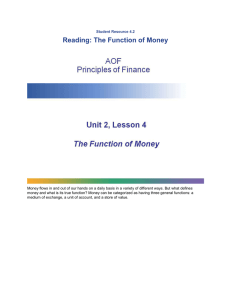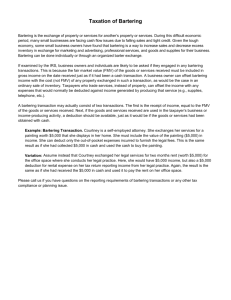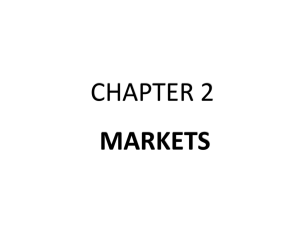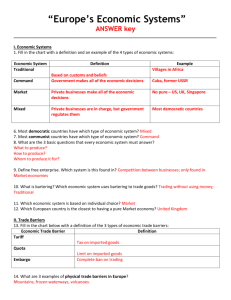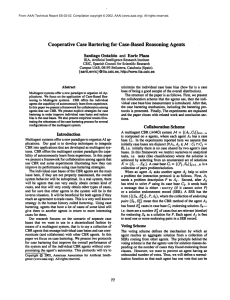Student Booklet
advertisement
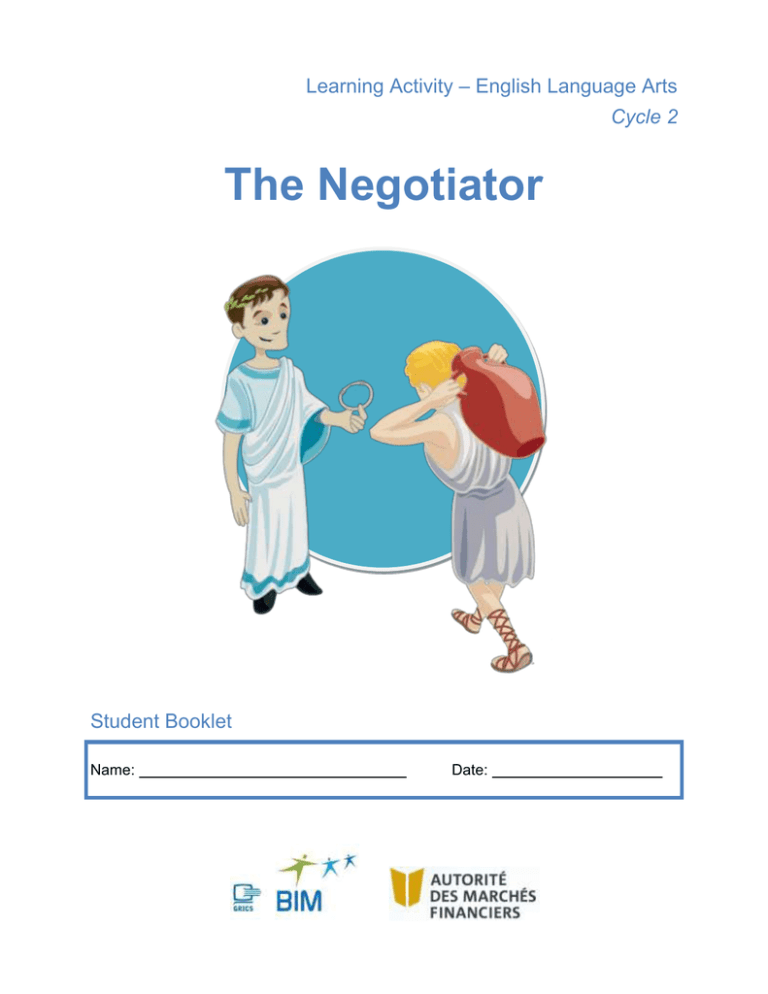
Learning Activity – English Language Arts Cycle 2 The Negotiator Student Booklet Name: Date: Part 1 – Getting Ready to Read Check off the strategies that you think may be useful to you as you read the text “Bartering, the Past and the Present”. Consult this list and if you are having difficulties understanding the text. I read aloud to myself in a low, whispering voice. I highlight unknown words with a colored pencil or a highlighter. I use a dictionary to find unknown words. I ask my friend for help when s(he) has finished reading. I underling the sentences that I did not understand. I continue reading, using the words or phrases that I already know. I guess the meaning of a word or sentence using the words that I know. Page 1 Part 2 – Reading the Story Read the following text using your reading strategies Bartering, the Past and the Present Did you know that humans used to live without money? Centuries ago, when money did not exist, people bartered. People would trade their property or their services against other goods or services. Examples of bartering are; “If you give me some bread, I will give you some wood” or “If you help me to collect wood, I will give you a bowl of soup.” Later on, people began to exchange goods or services for objects that had value. Salt, tea and cattle were once used like money. Strings of beads made from shells, called wampum, were used by North American Indians as money. However, it was not always easy to carry these objects and sometimes people argued about the value of these objects. How many bags of tea could you trade for a cow? In other parts of the world people started to use precious metals like silver and gold in exchange for goods and services. A specific amount of the metal would be weighed out and placed between two stencils. Then a man would use a large hammer to flatten out the metal. The stencils left images on both sides of the coin to show how much it was worth. This was the beginning of “stamping coins”. During the time of the Romans, a bronze coin was called an “as” and a silver coin was called a “denarius”. Ten bronze coins had the same value as one silver coin, like our dime and Page 2 penny. Workers received one “denarius” for a day’s wage. Therefore, a man had to work ten hours to receive his “denarius”, or in other words, he made one “as” per hour. Today, money is the common medium of exchange in most societies on Earth. We use money to pay for our food, clothing, housing, transportation and everything else we need to live. We receive money for the work we do and we use it to pay for all the services that we need. Despite all the advantages of currency, bartering has never really disappeared. During the Great Depression, people were very poor and bartering enabled them to obtain goods or products that they needed for everyday life. Even today, bartering is used, especially during economic crises. Since the beginning of the 2000s, new trading networks have been created using websites. Today, these “social networks” bring people together from all over the world and allow them to easily exchange goods and services. So what will the future bring? We can certainly see that bartering will always be present in our societies. Indeed, it may become even more important, especially with the need to recycle and to preserve our environment. Page 3 Part 3 – Showing I Understand! Refer to the text you have read and your own personal experiences to answer the following questions. 1. In your own words, what is bartering? __________________________________________________________________ __________________________________________________________________ __________________________________________________________________ 2. Why do you think that certain countries started “stamping coins” instead of using objects like cows, salt or shells for trading? __________________________________________________________________ __________________________________________________________________ __________________________________________________________________ 3. Do you think it is better to trade goods using money or by bartering? Explain. __________________________________________________________________ __________________________________________________________________ __________________________________________________________________ 4. Since the early 2000s people have started bartering through websites. Why do you think bartering is still used today? __________________________________________________________________ __________________________________________________________________ __________________________________________________________________ Page 4 5. How can bartering help preserve the environment? __________________________________________________________________ __________________________________________________________________ __________________________________________________________________ 6. Describe a personal experience you have had with bartering or trading. __________________________________________________________________ __________________________________________________________________ __________________________________________________________________ Page 5 Part 4 – A Network like No Other In teams, develop an idea for an exchange network in your school. Your network must meet the following requirements. Your exchange network: must be accessible to the greatest number of students possible; should be managed by students; must not use money. Brainstorm your ideas. Page 6 Draw a plan of your exchange network. Describe how your exchange network will work. _____________________________________________________________________ _____________________________________________________________________ _____________________________________________________________________ _____________________________________________________________________ _____________________________________________________________________ _____________________________________________________________________ _____________________________________________________________________ _____________________________________________________________________ _____________________________________________________________________ _____________________________________________________________________ _____________________________________________________________________ Page 7
